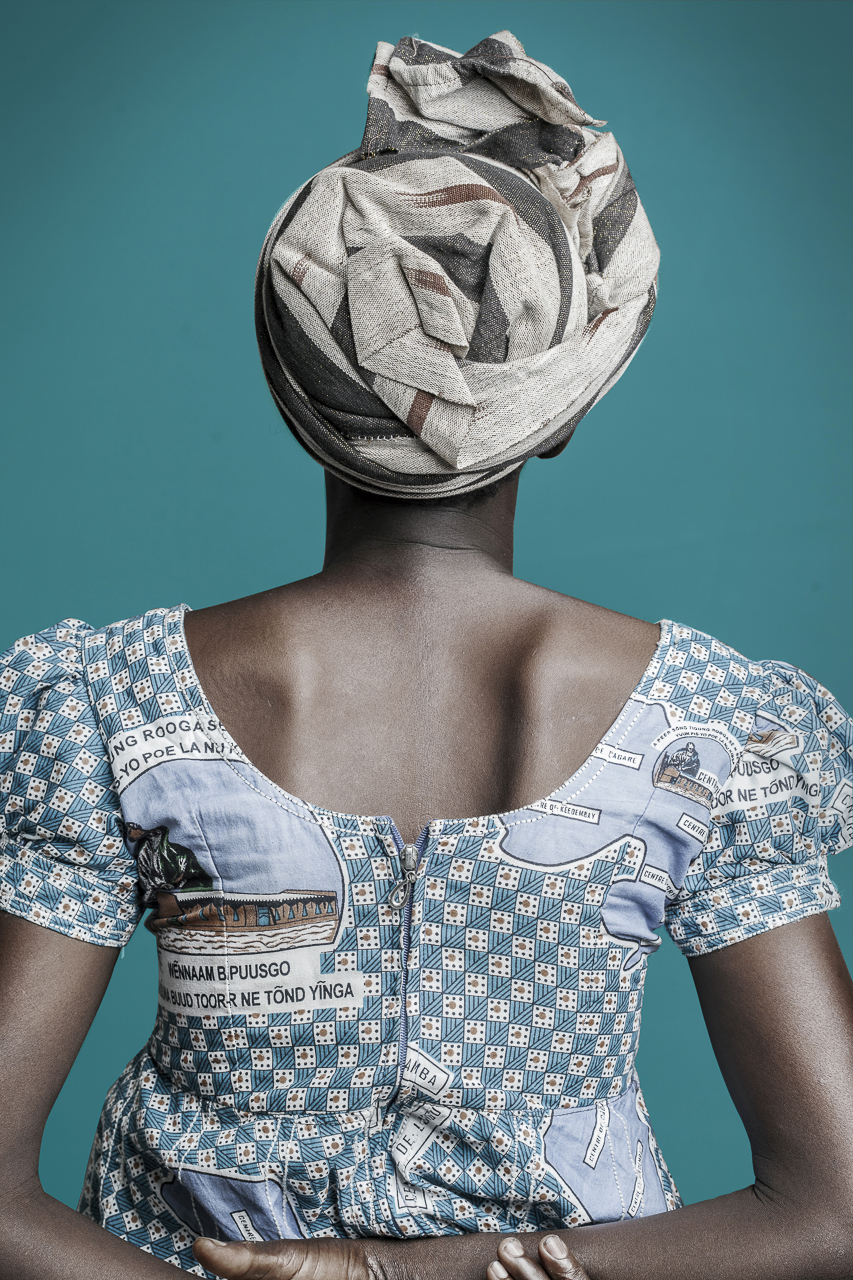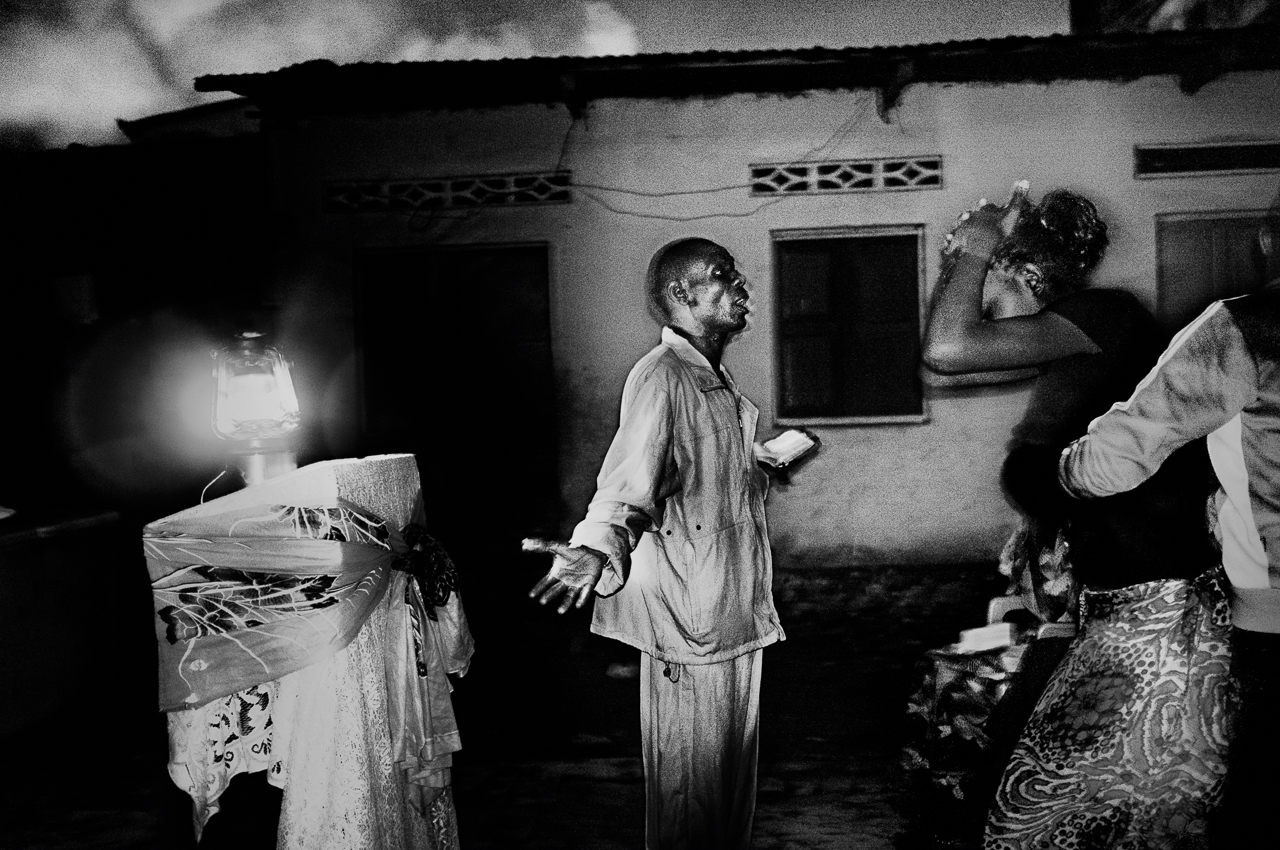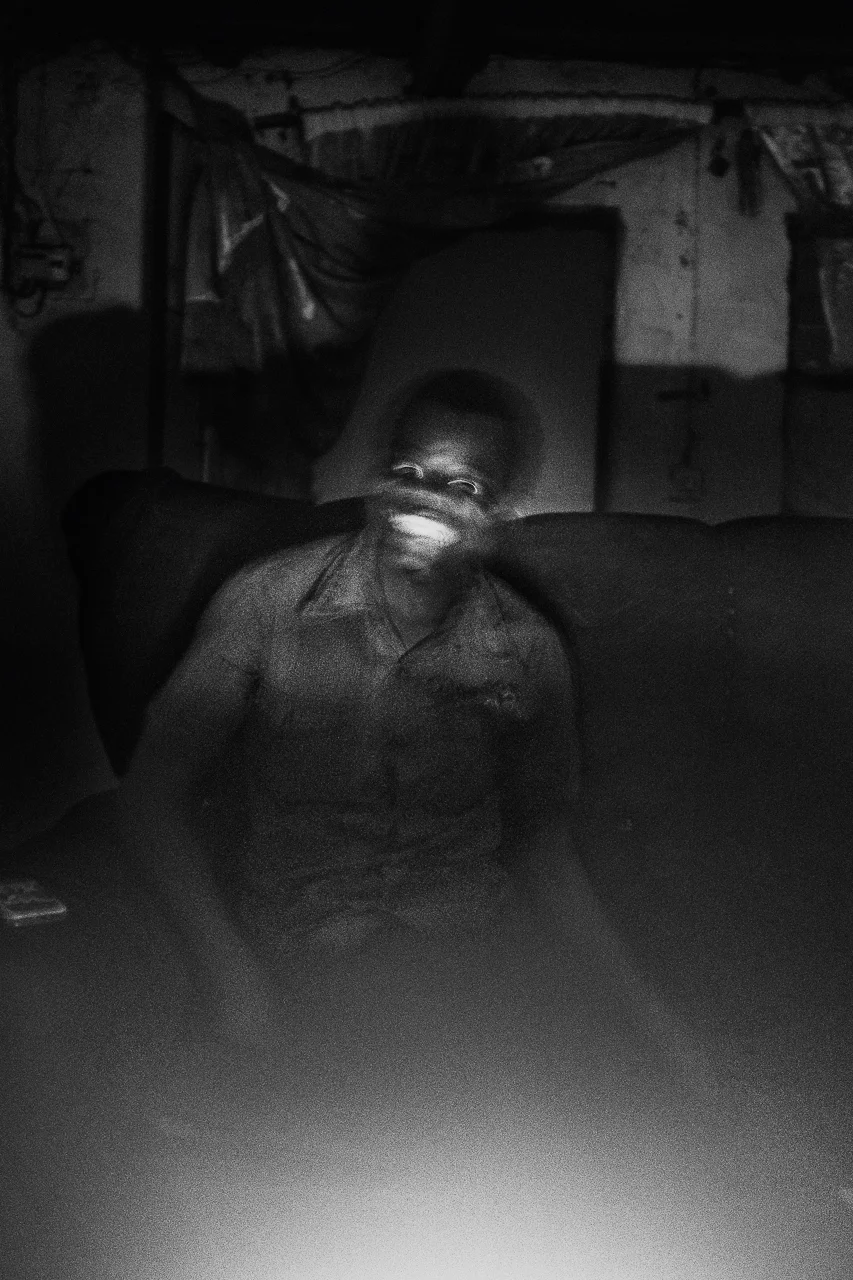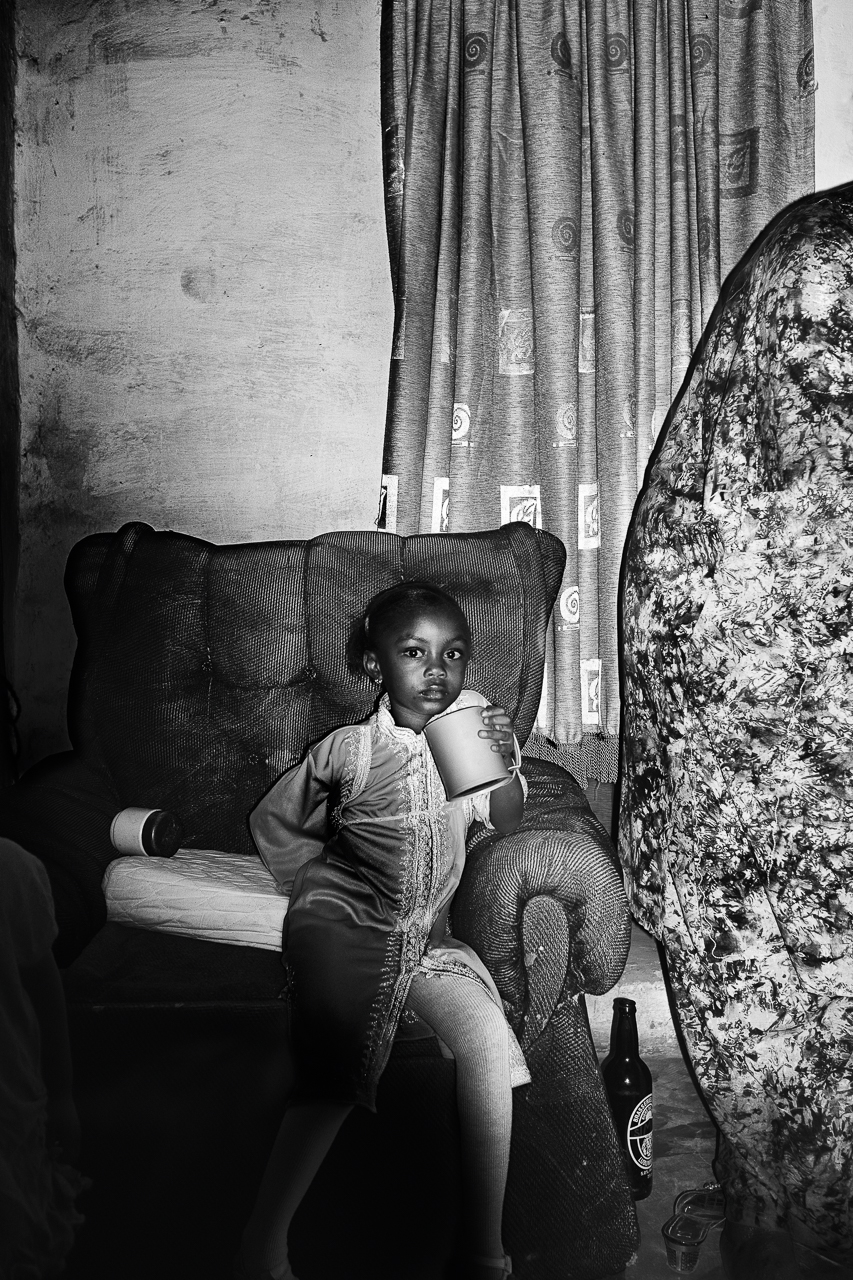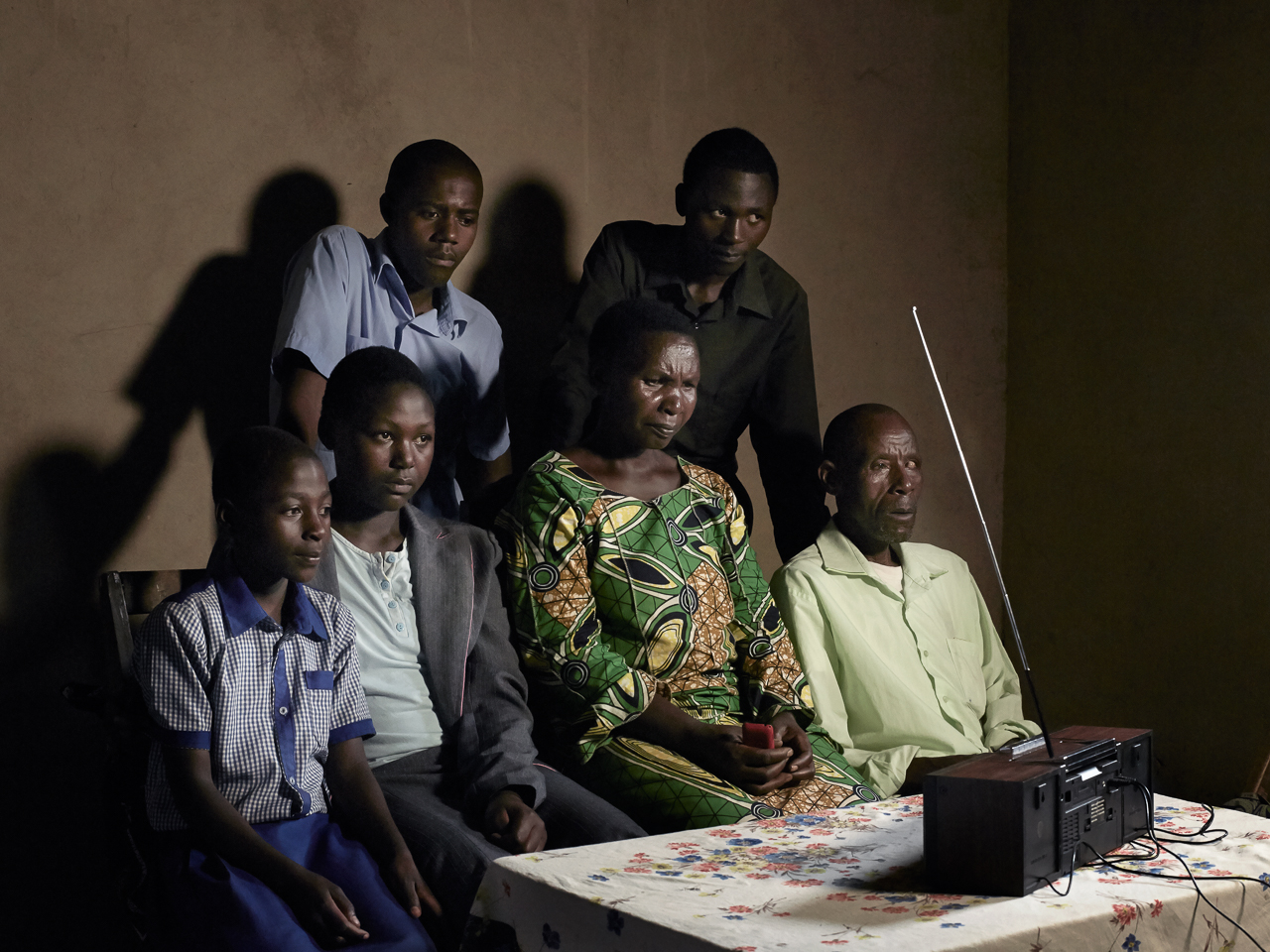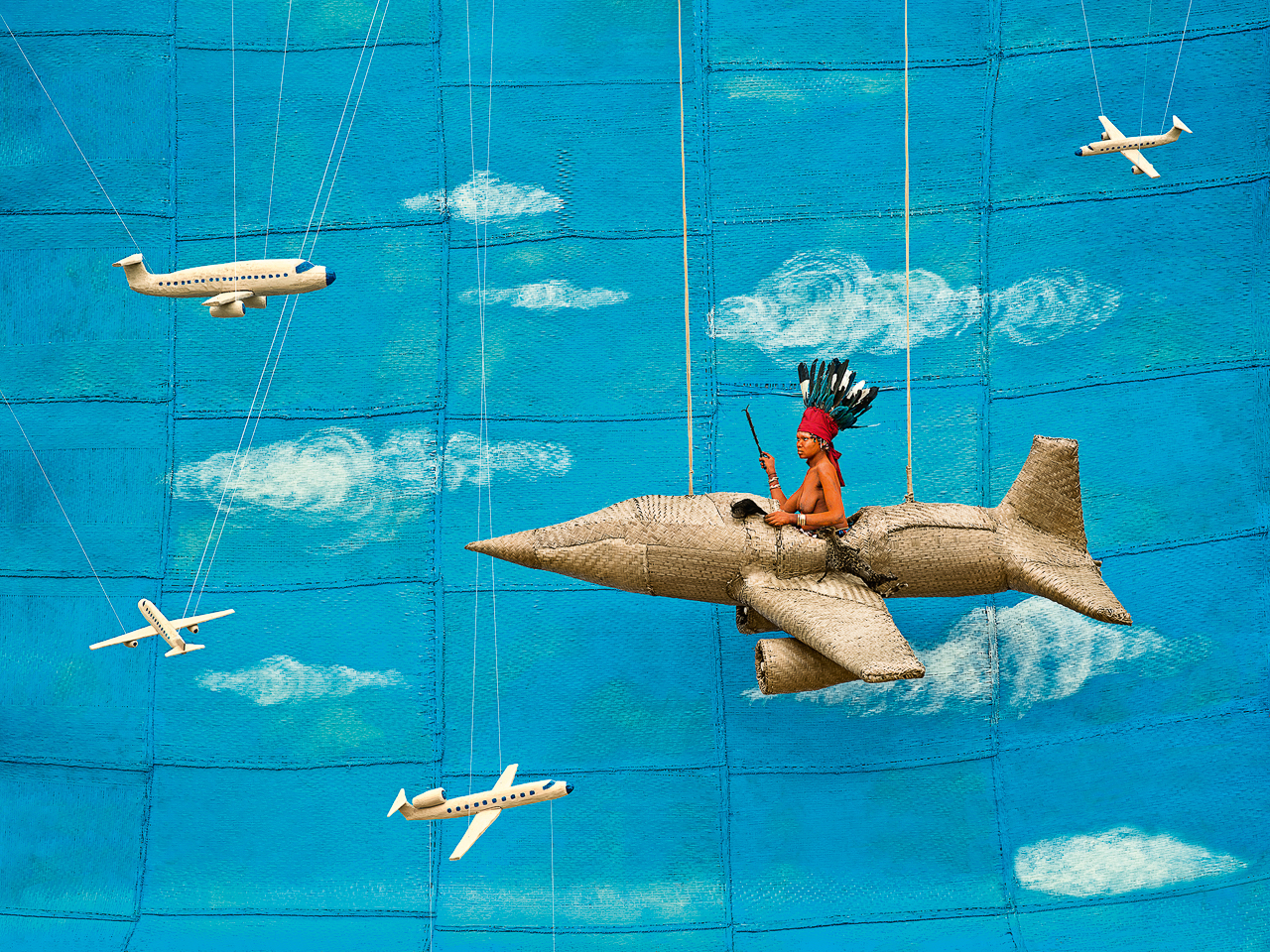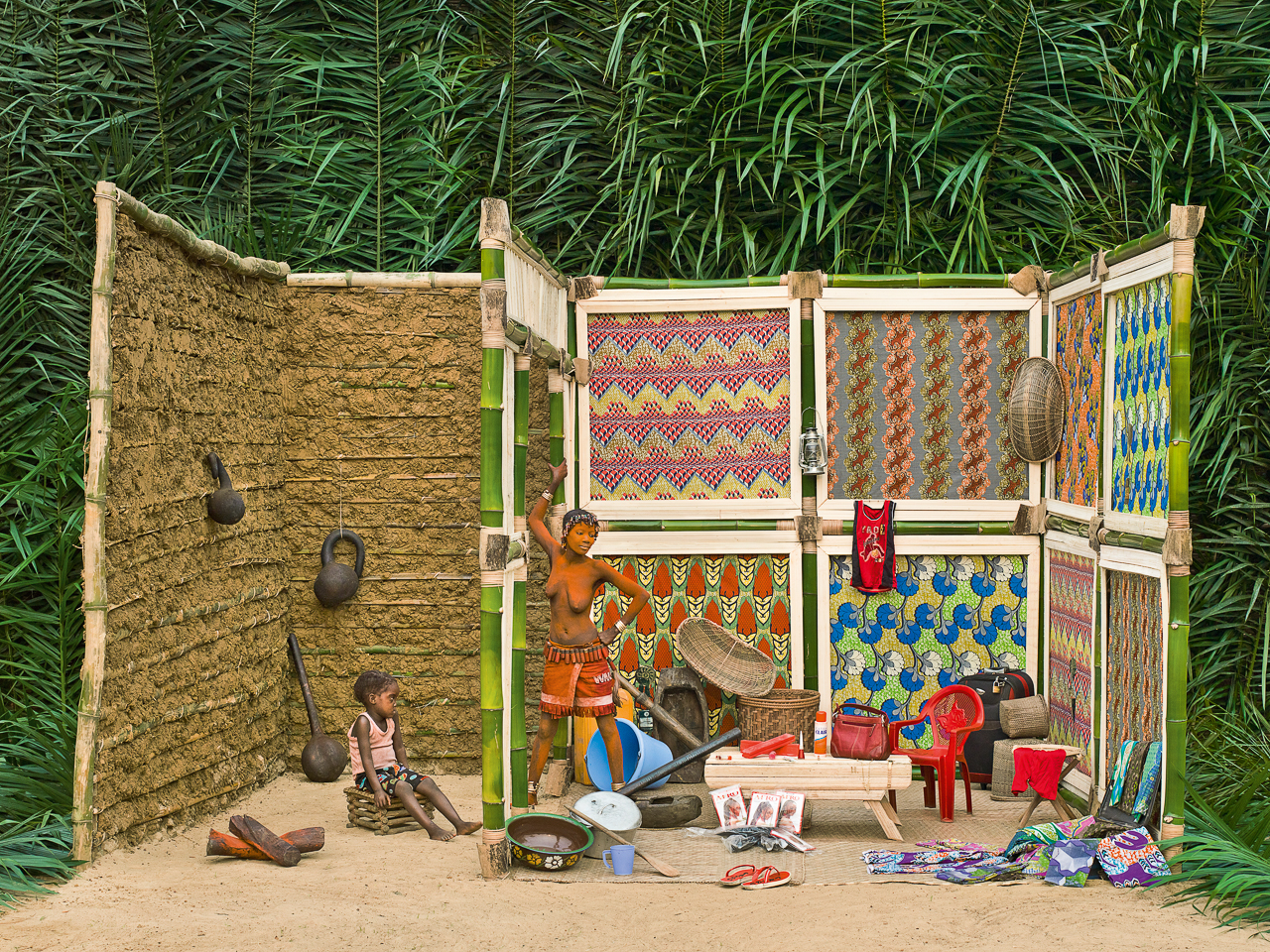POPCAP 2014
2014 saw piclet.org offering POPCAP for the third time, this time receiving 720 applications from 88 countries. The five winning artists were invited to attend the inauguration of the Image Afrique exhibition, presenting their work in Basel, Switzerland. This exhibition was followed by POPCAP 2014 shows at MoP6, the Cape Town Month of Photography in South Africa, the LagosPhoto Festvial in Nigeria, Eyes On – Month of Photography, Vienna, Austria, at FIFCV in Mindelo, Cabo Verde and Addis Foto Fest in Addis Ababa, Ethiopia.
View of POPCAP 2014 exhibition at IAF Basel Festival for Contemporary Art in September 2013, Basel, Switzerland
The POPCAP 2014 Winners
Joana Choumali
Born in 1974 in Abidjan, Ivory Coast. Lives in Abidjan, Ivory Coast
www.joanachoumali.com | Instagram: @joana_choumali
Hââbré, The last Generation
In the Kô language of Burkina Faso the word Hââbré means both writing and scarification. Scarification is the practice of performing a superficial incision on human skin. This practice is disappearing due to pressure from religious and state authorities, changing urban practices and the introduction of clothing within tribes. Nowadays only the older people have scarifications. While conducting my research, the majority of images I could find were from the beginning of the 20th century, and only a few contemporary images. I also had trouble finding scarified people to photograph because of their rarity.
This series of portraits leads us to question the link between past and present, and how self-image shifts depending on environment. The sometimes conflicting opinions of our witnesses illustrate the complexity of African identity today in a contemporary Africa torn between its past and its future. This “last generation” of people bearing the imprint of the past on their faces went from being the norm and having a high social value to being somewhat “excluded”. They are the last witnesses of an Africa of a bygone era.
Ilan Godfrey
Born in 1980 in Johannesburg, South Africa. Lives in Cape Town, South Africa
www.ilangodfrey.com | Instagram: @ilangodfrey
Legacy of the Mine
A selection of images from Legacy of the Mine is available for sale at Edition POPCAP.
For more than a century, South Africa’s demand for gold, diamonds, coal and platinum has gone from strength to strength, often shifting in accordance with the political economy and the availability of foreign markets. Mineral exploitation by means of cheap and disposable labour has brought national economic growth, making the mining industry the largest industrial sector in South Africa. The country is recognised globally for its abundance and variety of mineral resources, which account for a significant proportion of world production and reserves.
‘The mine’, irrespective of the particular minerals extracted, is central to understanding societal change across the country and evidently comparable to mining concerns around the world. This en- abled me to channel my conception of ‘the mine’ into visual representations that gave agency to these forgotten communities. The countless stories of personal suffering are brought to the surface and the legacy of ‘the mine’ is revealed.
This is apparent through land rendered unfit for alternative uses such as ecotourism and agriculture, through public health crises within local communities unequipped to cope with the burden of air, land and water pollution, and through the disruptive influence of historical labour exploitation impacting on familial structures and cultural positioning.
Léonard Pongo
Born in 1988 in Liège, Belgium. Lives in Brussels, Belgium
www.lpongo.eu | Instagram: @leonardpongo
The Uncanny
A selection of images from The Uncanny is available for sale at Edition POPCAP.
The Uncanny is a documentary project that has been conducted in the Democratic Republic of Congo in the provinces of Kinshasa, Bas-Congo, Bandundu, Kasaï and Katanga since the political elections of Autumn 2011. The project was carried out by accompanying family members, political personali- ties, religious leaders and local TV in order to document the events that rhythm the lives of the coun- try‘s inhabitants and try to understand Congolese society and recover part of my own identity.
This story brings a vision of the country experienced from within. It tries to show the collateral impact of the war instead of the direct hits. My need to see my country from a different point of view than the so often depicted crises, combined with the openness of people to share their most intimate moments with me and my willingness to be accepted as part of their lives, allowed me to depict my country intimately and subjectively, not trying to deliver a truth, but striving to understand people‘s realities and to reconstruct my own.
Anoek Steketee & Eefje Blankevoort
Born in 1974 in Hoorn, The Netherlands. Lives in Amsterdam, The Netherlands
Born in 1978 in Montreal, Canada. Lives in Amsterdam, The Netherlands
www.anoeksteketee.com | www.prospektor.nl | www.loveradio-rwanda.org
Instagram: @anoeksteketee
Love Radio
Twenty years after the genocide in Rwanda, during which almost one million Tutsis and moderate Hutus were murdered, photographer Anoek Steketee and journalist and filmmaker Eefje Blankevoort present Love Radio: episodes of love and hate, a multimedia project about the complex process ofreconciliation, based on a popular radio soap.
In an effort to prevent new outbreaks of violence, radio soap Musekeweya (‘New Dawn’) was created ten years ago by NGO Radio La Benevolencija. On the same frequency that in 1994 incited Hutu gangs to kill, Musekeweya today broadcasts a message of reconciliation. The soap is hugely popular, with an estimated 80% of the Rwandan population tuning in to the weekly episodes.
The story line in Musekeweya takes place in Muhumuro and Bumanzi, two fictional villages that hate each other. Musekeweya seems to be a fairly normal soap at first, full of romances, intrigues and villains with resounding names like Rutaganira and Zaninka. The love between Shema and Batamuriza is like a Rwandan ‘Romeo and Juliet’. But there is a major difference: the soap is sup- posed to do more than just entertain; it is also intended to convey to listeners how violence beginsand how it can be prevented. While the radio show has an idealistic premise, this project also raises some questions.Can fiction get people to reconcile? Or is this positive voice merely a veneer in a country still coping with the traumas of the genocide? And what does reconciliation actually mean?
The project straddles the boundary between fact and fiction. The photographs do not take a purely documentary approach. The camera is used not only to raise social issues, but also as a tool for theimagination. By playing with light and partially directing the subjects, alienating images emerge, with the surroundings as an gloomy stage set.
Patrick Willocq
Born in 1969 in Strasbourg, France. Lives in Kinshasa, Democratic Republic of the Congo
www.patrickwillocq.com | @patrick_willocq
I am Walé Respect Me
I am Walé Respect Me explores an initiation ritual of the Ekonda pygmies in the Democratic Republic of Congo. The Ekondas believe that the most important moment in the life of a woman is the birth of her first child.
The young mother (usually aged 15 to 18) is called Walé, meaning “primiparous nursing mother“. She returns to her parents where she remains secluded for a period of two to five years. During her seclusion, a Walé is kept under very special care. During this entire period she must also respect a taboo regarding sex and is given a similar status to that of a patriarch. The end of her seclusion is marked by a dancing and singing ritual. The choreography and the songs have a very codified structure but also contain unique qualities specific to each Walé. She sings the story of her own loneliness, and with humour praises her own behavior while discrediting her Walé rivals.
I‘ve always been fascinated by native tribes because I feel they have a wealth that we have somehow lost. Today, many initiation rituals in the Congo are disappearing. The ritual of the Walé woman has resisted the pressures of modern life — but for how long? To document this beautiful tribute to motherhood, fertility and femininity, I approached a number of Walés and asked them to participate in staged photographs. Each image works as a visual representation of one of the subjects that the Walé would sing about on the day of her release from seclusion. You are, in essence, watching a song.
This series is a personal reflection of women in general and the Walé ritual specifically. But first and foremost, it is the result of a unique collaboration with young pygmy women, their respective clans, an ethnomusicologist, an artist and many artisans of the forest. By working together, our mutual experiences became richer, culminating in the birth of I am Walé Respect Me.









